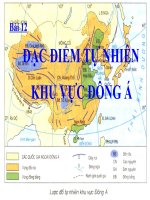Đặc điểm kiến tạo khu vực vịnh Bắc Bộ trong cenozoic
Bạn đang xem bản rút gọn của tài liệu. Xem và tải ngay bản đầy đủ của tài liệu tại đây (651.15 KB, 5 trang )
����������������������������������������������������������������������������������������������������������������������������������������������������������������������������������������������������������������������������������������������������������������������������������������������������������������������������������������������������������������������������������������������������������������������������������������������������������������������������������������������������������������������������������������������������������������������������������������������������������������������������������������������������������������������������������������������������������������������������������������������������������������������������������������������������������������������������������������������������������������������������������������������������������������������������������������������������������������������������������������������������������������������������������������������������������������������������������������������������������������������������������������������������������������������������������������������������������������������������������������������������������������������������������������������������������������������������������������������������������������������������������������������������������������������������������������������������������������������������������������������������������������������������������������������������������������������������������������������������������������������������������������������������������������������������������������������������������������������������������������������������������������������������������������������������������������������������������������������������������������������������������������������������������������������������������������������������������������������������������������������������������������������������������������������������������������������������������������������������������������������������������������������������������������������������������������������������������������������������������������������������������������������������������������������������������������������������������������������������������������������������������������������������������������������������������������������������������������������������������������������������������������������������������������������������������������������������������������������������������������������������������������������������������������������������������������������������������������������������������������������������������������������������������������������������������������������������������������������������������������������������������������������������������������������������������������������������������������������������������������������������������������������������������������������������������������������������������������������������������������������������������������������������������������������������������������������������������������������������������������������������������������������������������������������������������������������������������������������������������������������������������������������������������������������������������������������������������������������������������������������������������������������������������������������������������������������������������������������������������������������������������������������������������������������������������������������������������������������������������������������������������������������������������������������������������������������������������������������������������������������������������������������������������������������������������������������������������������������������������������������������������������������������������������������������������������������������������������������������������������������������������������������������������������������������������������������������������������������������������������������������������������������������������������������������������������������������������������������������������������������������������������������������������������������������������������������������������������������������������������������������������������������������������������������������������������������������������������������������������������������������������������������������������������������������������������������������������������������������������������������������������������������������������������������������������������������������������������������������������������������������������������������������������������������������������������������������������������������������������������������������������������������������������������������������������������������������������������������������������������������������������������������������������������������������������������������������������������������������������������������������������������������������������������������������������������������������������������������������������������������������������������������������������������������������������������������������������������������������������������������������������������������������������������������������������������������������������������������������������������������������������������������������������������������������������������������������������������������������������������������������������������������������������������������������������������������������������������������������������������������������������������������������������������������������������������������������������������������������������������������������������������������������������������������������������������������������������������������������������������������������������������������������������������������������������������������������������������������������������������������������������������������������������������������������������������������������������������������������������������������������������������������������������������������������������������������������������������������������������������������������������������������������������������������������������������������������������������������������������������������������������������������������������������������������������������������������������������������������������������������������������������������������������������������������������������������������������������������������������������������������������������������������������������������������������������������������������������������������������������������������������������������������������������������������������������������������������������������������������������������������������������������������������������������������������������������������������������������������������������������������������������������������������������������������������������������������������������������������������������������������������������������������������������������������������������������������������������������������������������������������������������������������������������������������������������������������������������������������������������������������������������������������������������������������������������������������������������������������������������������������������������������������������������������������������������������������������������������������������������������������������������������������������������������������������������������������������������������������������������������������������������������������������������������������������������������������������������������������������������������������������������������������������������������������������������������������������������������������������������������������������������������������������������������������������������������������������������������������������������������������������������������������������������������������������������������������������������������������������������������������������������������������������������������������������������������������������������������������������������������������������������������������������������������������������������������������������������������������������������������������������������������������������������������������������������������������������������������������������������������������������������������������������������������������������������������������������������������������������������������������������������������������������������������������������������������������������������������������������������������������������������������������������������������������������������������������������������������������������������������������������������������������������������������������������������������������������������������������������������������������������������������������������������������������������������������������������������������������������������������������������������������������������������������������������������������������������������������������������������������������������������������������������������������������������������������������������������������������������������������������������������������������������������������������������������������������������������������������������������������������������������������������������������������������������������������������������������������������������������������������������������������������������������������������������������������������������������������������������������������������������������������������������������������������������������������������������������������������������������������������������������������������������������������������������������������������������������������������������������������������������������������������������������������������������������������������������������������������������������������������������������������������������������������������������������������������������������������������������������������������������������������������������������������������������������������������������������������������������������������������������������������������������������������������������������������������������������������������������������������������������������������������������������������������������������������������������������������������������������������������������������������������������������������������������������������������������������������������������������������������������������������������������������������������������������������������������������������������������������������������������������������������������������������������������������������������������������������������������������������������������������������������������������������������������������������������������������������������������������������������������������������������������������������������������������������������������������������������������������������������������������������������������������������������������������������������������������������������������������������������������������������������������������������������������������������������������������������������������������������������������������������������������������������������������������������������������������������������������������������������������������������������������������������������������������������������������������������������������������������������������������������������������������������������������������������������������������������������������������������������������������������������������������������������������������������������������������������������������������������������������������������������������������������������������������������������������������������������������������������������������������������������������������������������������������������������������������������������������������������������������������������������������������������������������������������������������������������������������������������������������������������������������������������������������������������������������������������������������������������������������������������������������������������������������������������������������������������������������������������������������������������������������������������������������������������������������������������������������������������������������������������������������������������������������������������������������������������������������������������������������������������������������������������������������������������������������������������������������������������������������������������������������������������������������������������������������������������������������������������������������������������������������������������������������������������������������������������������������������������������������������������������������������������������������������������������������������������������������������������������������������������������������������������������������������������������������������������������������������������������������������������������������������������������������������������������������������������������������������������������������������������������������������������������������������������������������������������������������������������������������������������������������������������������������������������������������������������������������������������������������������������������������������������������������������������������������������������������������������������������������������������������������������������������������������������������������������������������������������������������������������������������������������������������������������������������������������������������������������������������������������������������������������������������������������������������������������������������������������������������������������������������������������������������������������������������������������������������������������������������������������������������������������������������������������������������������������������������������������������������������������������������������������������������������������������������������������������������������������������������������������������������������������������������������������������������������������������������������������������������������������������������������������������������������������������������������������������������������������������������������������������������������������������������������������������������������������������������������������������������������������������������������������������������������������������������������������������������������������������������������������������������������������������������������������������������������������������������������������������������������������������������������������������������������������������������������������������������������������������������������������������������������������������������������������������������������������������������������������������������������������������������������������������������������������������������������������������������������������������������������������������������������������������������������������������������������������������������������������������������������������������������������������������������������������������������������������������������������������������������������������������������������������������������������������������������������������������������������������������������������������������������������������������������������������������������������������������������������������������������������������������������������������������������������������������������������������������������������������������������������������������������������������������������������������������������������������������������������������������������������������������������������������������������������������������������������������������������������������������������������������������������������������������������������������ắng đọng trầm tích được dịch chuyển dần về phía
Đông Nam và chiều dày trầm tích cũng có xu hướng tăng
dần theo hướng này.
Tài liệu tham khảo
1. U.Barckhausen, H.A.Roeser. Seafloor spreading
anomalies in the South China sea revisited. ContinentOcean Interactions in the East Asian Marginal Seas.
Monograph Series. 2004; 149: p. 121 - 125.
2. P.Clift, P.Wang, W.Kuhnt, R.Hall, R.Tada. Continentocean interactions within the East Asian marginal seas.
Eos, Transactions American Geophysical Union. 2003;
84(15): p. 139 - 141.
3. P.Clift, G.H.Lee, N.Anh Duc, U.Barckhausen,
Hoang Van Long, S.Zhen. Seismic reflection evidence for a
Dangerous Grounds miniplate: No extrusion origin for the
South China Sea. Tectonics. 2008; 27(3).
4. R.Hall, M.Van Hattum, Spakman. Impact of
India-Asia collision on SE Asia: The record in Borneo.
Tectonophysics. 2008, 451(1-4): p. 366 - 389.
5. C.G.Macpherson. Lithosphere erosion and crustal
growth in Subduction zones: Insights from initiation of the
nascent East Philippine Arc. Geology. 2008; 36(4): p. 311 314.
6. Hoang Van Long, Peter D.Clift, Anne M.Schwab,
Mads Huuse, Duc Anh Nguyen, Sun Zhen. Large-scale
erosional response of SE Asia to monsoon evolution
reconstructed from sedimentary records of the Song HongYinggehai and Qiongdongnan basins. Geological Society.
2010; 342: p. 219 - 244.
7. C.Hutchison. Marginal basin evolution: the Southern
South China Sea. Marine and Petroleum Geology. 2004;
21(9): p. 1129 - 1148.
8. International Ocean Discovery Program. Opening
of South China Sea and its implications for SE Asia tectonics,
climate and deep mantle processes since the Late Mezozoic.
Expedition 349 preliminary report, IODP. 2014: 109p.
9. Nguyễn Giao, Nguyễn Trọng Tín. Bể trầm tích Nam
Côn Sơn và tài nguyên dầu khí. Địa chất và Tài nguyên Dầu
khí. Nhà xuất bản Khoa học và Kỹ thuật. 2007: trang 317
- 360.
PETROVIETNAM
10. Nguyễn Mạnh Huyền, Hồ Đắc Hoài. Bể trầm tích
Sông Hồng và tài nguyên dầu khí. Địa chất và Tài nguyên
Dầu khí. Nhà xuất bản Khoa học và Kỹ thuật. 2007: trang
185 - 240.
11. Nguyễn Quang Bô. Bể trầm tích Tư Chính - Vũng
Mây và tài nguyên dầu khí. Địa chất và Tài nguyên Dầu khí.
Nhà xuất bản Khoa học và Kỹ thuật. 2007: trang 403 - 424.
12. C.Rangin, M.Klein, D.Roques, X.Le Pichon,
L.V.Truong. The Red River fault system in the Tonkin Gulf,
Vietnam. Tectonophysic. 1995; 243: p. 209 - 222.
13. A.Replumaz, P.Tapponnier. Reconstruction of the
deformed collision zone between India and Asia by backward
motion of lithospheric blocks. J. Geophys. Res. 2003; 108(6):
p. 22 - 85.
14. P.Tapponnier, G.Peltzer, A.Y.Le Dain, R.Armijo,
P.Cobbold. Propagating extrusion tectonics in Asia; new
insights from simple experiments with plasticine. Geology
(Boulder). 1982; 10: p. 611 - 616.
15. Trần Lê Đông, Phùng Đắc Hải. Bể trầm tích Cửu
Long và tài nguyên dầu khí. Địa chất và Tài nguyên Dầu khí.
Nhà xuất bản Khoa học và Kỹ thuật. 2007: trang 269 - 316.
16. Trần Văn Trị, Vũ Khúc. Địa chất và Tài nguyên Việt
Nam. Nhà xuất bản Khoa học Tự nhiên và Công nghệ.
2009: 590 trang.
Cenozoic tectonic evolution in the Tonkin Gulf
Hoang Van Long1, Ngo Van Hung2
University of Mining and Geology
2
Vietnam Oil and Gas Group
1
Summary
The gulf of Tonkin is one of the areas with complex geological structures and evolutionary history. This area has experienced many development periods and was affected by various regional tectonic events. Studying the geological
structure and stratigraphy of this area can help us reconstruct the tectonic regime controlling geological settings in
the region for basic researches and oil and gas exploration. In this paper, the authors present some study results on
the tectonic evolution of the gulf of Tonkin based on 2D seismic data.
The results show that the continental shelf within the Tonkin Gulf has evolved on the pre-Cenozoic basement, which
was supposed to start in the Eocene. The tectonic evolution of the region has undergone 4 periods: (1) intracontinental rifting (Eocene - Late Oligocene); (2) Thermal subsidence (Early Miocene); (3) Regional inversion (Middle Miocene)
and (4) Subsidence due to sediment load (After Middle Miocene).
Apart from the regional inversion event, the northwestern part of Tonkin Gulf was affected by at least 2 local uplifting
events, which occurred in the Oligocene - Early Miocene. In contrast, the southeastern part was dominated by subsiding process.
Key words: Tonkin Gulf, East Sea, Tectonics.
DẦU KHÍ - SỐ 2/2015
27









